What is Interphase / Interphase Definition?
Interphase: Cell division is a continual process in which daughters cells emerge, develop, and create their own daughter cells, and the cycle continues. Cell growth and cell division are two events that occur during the cell cycle, with the interphase defining the phase of cell expansion during which various metabolic responses occur. The interphase is the longest phase of the cell cycle and serves as a precursor for mitosis. The cytoplasm and cell nucleus are where the interphase takes place.
Figure: The Stages of Interphase and the Cell Cycle. Image Source: OpenStax (Rice University).
Interphase stages: What happens during Interphase?
- Gap 1 (G1)
- Gap 2 (G2), and
- Gap 3 (G3) (G2).
The growth and preparation for mitosis are represented by the G1 and G2 phases.
The synthesis (S) phase refers to the process of a cell copying or duplicating its complete genome’s DNA.
Gap 1 (G1 Phase)
- This is the phase of the cell’s life when it grows and functions normally, generating large amounts of protein.
- As more cell organelles are created, the cell grows in size and volume.
- After generating enough ribosomes, the cell can go to the following phase, S.
- As the phase progresses, the cell’s mitochondria fuse together to form a network of mitochondria for efficient energy production for cell operations.
- If the cell can no longer divide, it enters G0.
Synthesis, S phase
- The cell synthesizes and doubles its DNA during this phase.
- During doubling, the number of chromosomes remains constant, a process known as semiconservative replication.
- Additionally, new packaging proteins known as histones wrap around the DNA copies to keep them stable.
- More phospholipids are created during the S phase, which make up the cell membrane and the membranes of the cell organelles.
Click Here for Complete Biology Notes
Gap 2 (G2)
- The cell maintains its growth phase while preparing for cell division during this phase.
- Mitochondria will continue to divide and expand until mitosis begins.
- During this time, the plant chloroplast also splits.
Controlling the Interphase
- The cell is controlled by a checkpoint known as the G1/S at the end of Gap 1 (G1), which determines whether the cell should replicate or not. DNA damages or errors are checked at this checkpoint to ensure that cell division continues to thrive.
- Molecular switching occurs when various proteins interact with the DNA during this process.
- The molecular switch is a on and off process and it continues through the S phase which allows the damaged cells to undergo apoptosis (programmed cell death) (programmed cell death).
- At the G2 phase again, a second checkpoint takes place after the synthesis of DNA in the S phase.
- The second checkpoint employs kinase enzymes, which regulate different stages of cell division.
- The Cyclin-Dependent Kinase (CDK) is an example of a kinase enzyme in cell division that uses cell signals to alter cell processes, especially when a genetic mutation is discovered.
- Regulatory protein complexes (tumor suppressors) activate the Cyclin-Dependent Kinase, which limit cell development and cause apoptotic mechanisms in erroneous cells.
- A permanent molecular switch is turned on when a genetic mutation in the regulatory proteins at the checkpoint occurs, resulting in uncontrolled cell multiplication, which can lead to carcinogenesis or tumor growth.
- Furthermore, if the cell skips the second checkpoint, cancer cells, such as neoplasia, can emerge as a result of unregulated cell division.
Interphase and the cell cycle
- The interphase prepares the cell for the cell division phases that follow, such as mitosis and cytokinesis.
- Since interphase is a preparation phase for cell division, it allows the cell to expand and synthesize organelles that will allow the cell to operate properly once it matures.
- Interphase stages meet the external and internal conditions for cell mechanisms, preparing the cell for mitosis.
- In plants, the cell enters prophase or pre-prophase after the G2 stage.
- The first step of mitotic cell division is prophase.
- It’s worth noting that certain cells go through the G0 stage of cell division, which prevents cell division.
- Some cells that do not divide stay in the G0 state indefinitely.
Top Online PhD Programs : Pros and Cons, Universities, Courses, Career.
Interphase in different cells
- Interphase processing pathways may differ between cells.
- G1, S, and G2 are the stages of interphase that a normal eukaryotic cell goes through. Approximately 95% of the time, cells undergoing cell division are in the interphase.
- Cells that do not divide (do not replicate DNA) remain in the interphase stage indefinitely, such as neuron cells, but cells that are actively dividing, such as skin cells, must enter the interphase to acquire all of the essential organelles while actively replicating throughout the interphase.
- Errors at the second checkpoint, G2, lead to the development of cancer cells.
- A mutation that disrupts the function of regulatory proteins that activate Cyclin-Dependent Kinase enzymes causes persistent molecular switching, which leads to unregulated cell division and carcinogenesis or tumour growth.
- Bacterial cells do not go through the interphase stage of cell division since their cell division process is meiosis, where the interphase is a special phase called interkinesis and no DNA replication takes place.
Interphase Citations
- Microbiology by Prescott, 5th Edition
- https://www.expii.com/t/what-is-interphase-overview-diagrams-10154
- https://bio.libretexts.org/Bookshelves/Introductory_and_General_Biology/Book%3A_General_Biology_(Boundless)/10%3A_Cell_Reproduction/10.2%3A_The_Cell_Cycle/10.2B%3A_The_Mitotic_Phase_and_the_G0_Phase
- Teach me Physiology/ The Cell Cycle
- https://sciencing.com/list-3-steps-occur-during-interphase-17577.html
- https://ib.bioninja.com.au/standard-level/topic-1-cell-biology/16-cell-division/interphase.html
- https://en.wikipedia.org/wiki/Interphase#:~:text=Interphase%20is%20the%20portion%20of,prepares%20for%20mitosis%20(G2).
Related Posts
- Phylum Porifera: Classification, Characteristics, Examples
- Dissecting Microscope (Stereo Microscope) Definition, Principle, Uses, Parts
- Epithelial Tissue Vs Connective Tissue: Definition, 16+ Differences, Examples
- 29+ Differences Between Arteries and Veins
- 31+ Differences Between DNA and RNA (DNA vs RNA)
- Eukaryotic Cells: Definition, Parts, Structure, Examples
- Centrifugal Force: Definition, Principle, Formula, Examples
- Asexual Vs Sexual Reproduction: Overview, 18+ Differences, Examples
- Glandular Epithelium: Location, Structure, Functions, Examples
- 25+ Differences between Invertebrates and Vertebrates
- Lineweaver–Burk Plot
- Cilia and Flagella: Definition, Structure, Functions and Diagram
- P-value: Definition, Formula, Table and Calculation
- Nucleosome Model of Chromosome
- Northern Blot: Overview, Principle, Procedure and Results

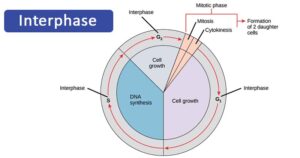

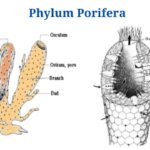





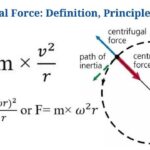



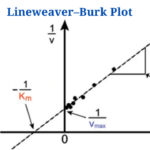

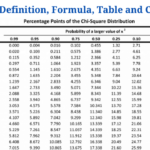
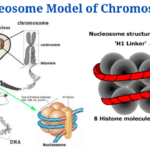

1 thought on “Interphase: Definition, Stages, Cell Cycle, Diagram”